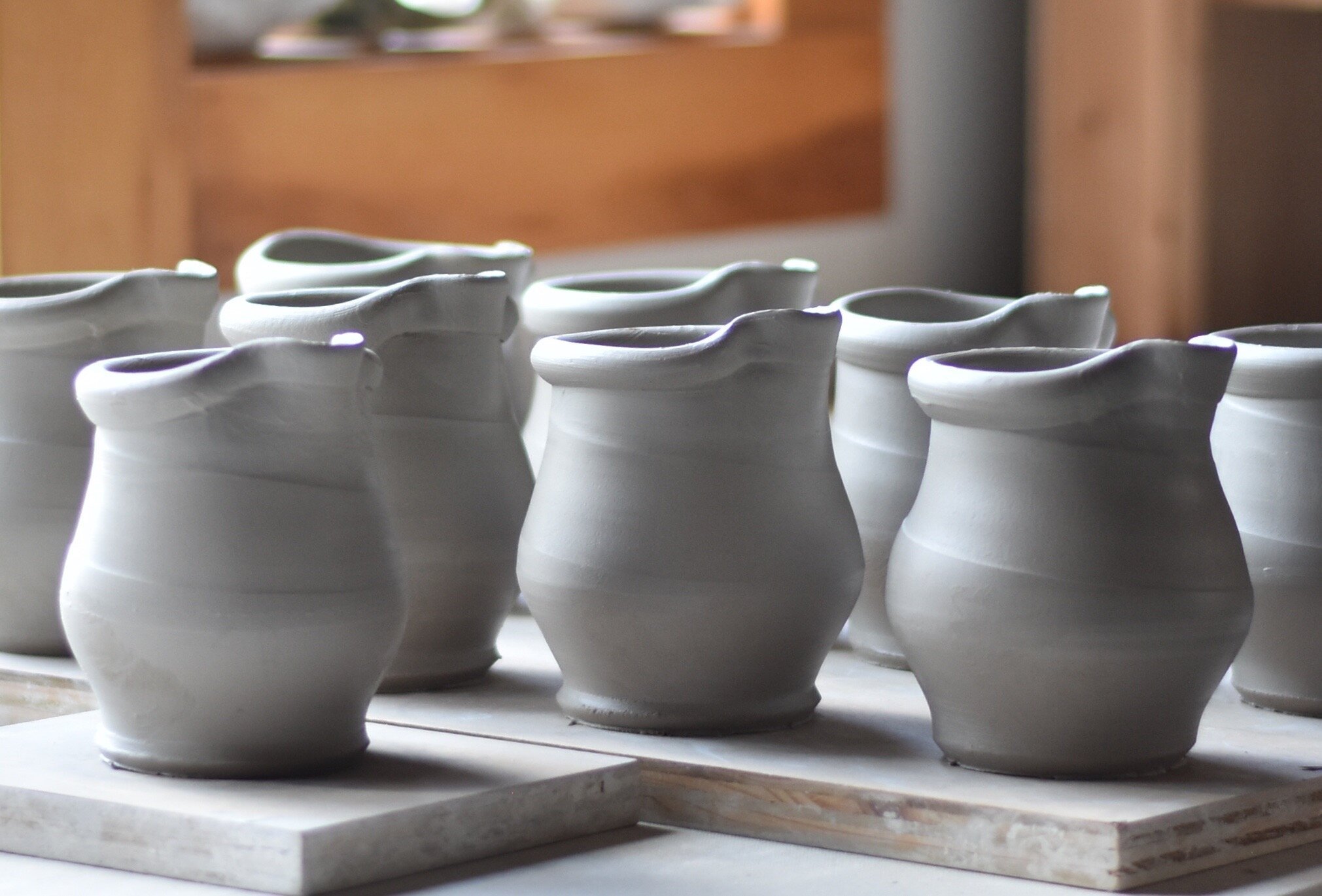3 Ways to Trim a Pottery Pitcher
One of the most frustrating things when making a pitcher is how to trim it.
So you’ve made a beautiful little creamer, or gravy boat, or large pitcher. The spout is high enough above the rim of the pot to give it some grace, and to allow for it to properly function. The only problem is how to trim the darn thing! This can be a real obstacle when trying to put the finishing touches on a pitcher. Every potter has their own ways of navigating such obstacles. Just thought I’d share what I’ve figured out over the years. I’ve made a short video on 3 different methods I use to trim a pitcher. It’s one of my “Quick Pottery” videos which you can find on my YouTube channel.
My favorite and easiest method…
Leave the pitcher on the throwing bat, (meaning do not pull a wire through it after it is freshly thrown). Let it dry to the almost leather hard stage and put it back on the wheel to trim the lower portion of the pitcher. I try to make my pitchers thin on the bottom so there is no need to trim there. I then wire it through to take it off the bat, then just roll my thumb around the bottom edge to create a soft transition from side to bottom.
Another way is to use a trimming chuck…
I use a chuck when I have a pitcher that is wide enough at the mouth.
In the video I trim a gravy boat, which has a wide mouth. With this method just make sure the inside bottom is stiff enough so the chuck does not damage it.
There are many kinds of chucks you can make. The one shown in the video is a tall bottomless cylinder with a narrow mid section. This type of chuck is also great for trimming lids with a knob and narrow neck vases.
A more difficult way is to use foam…
Even though this way can be more difficult when you are first learning I’ve found it to be very useful when the mouth of the form isn’t wide enough to fit over a chuck.
In the video I show how I trim a small creamer with this method. I purchased 1/4 inch foam at the textile store, cut it into squares and just fold it over, placing it on the low side opposite the spout. You can also use a sponge. I make sure to use foam bat so the spout does not get damaged.
I know from my many years of teaching pottery that the folded over foam (or a sponge) is a good remedy for beginners who want to trim their wobbly pots!
Hope these ideas give you something to add to your pottery process toolbox!



